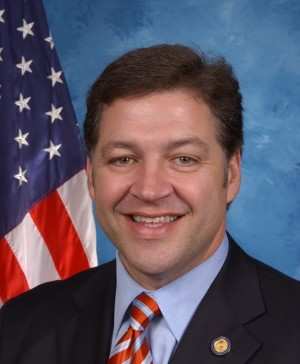Thu, Jan 21, 2016
Cost, Efficiency, & Modernization Expected Goals All Missed, According To Report
The Department of Transportation Inspector General has released a scathing report outlining numerous shortcomings of the FAA's efforts to implement reforms intended to help the agency operate more effectively and efficiently, improve the delivery of air traffic services, and modernize the U.S. air traffic control system.

The report finds that FAA’s efforts have fallen short of anticipated cost savings and operational efficiencies, as well as in improving the delivery of new technologies and capabilities.
“This report shows that the FAA simply isn’t suited to successfully modernize our Nation’s antiquated air traffic control system,” said Transportation and Infrastructure Committee Chairman Bill Shuster (R-PA) (pictured). “Over two decades of FAA personnel, organizational, and acquisition reforms have failed to slow the agency’s cost growth, improve its productivity, or improve its performance in modernizing the system. The FAA remains a vast government bureaucracy, not a high-tech service provider. It’s clear from the DOT IG’s findings that we need transformational FAA reform if we are going to have a safe, efficient, 21st century aviation system.”
The Inspector General’s report, requested by the leadership of the House Transportation Committee and its Aviation Subcommittee, says that although the FAA has implemented performance-based compensation systems, established the Air Traffic Organization (ATO), contracted out flight service stations operations, and reorganized multiple times over the years, costs continue to rise while operational productivity has declined. The FAA has also missed opportunities to complete large-scale facility consolidations that would maximize operations, improve the flow of air traffic, avoid the cost of maintaining aging facilities and facilitate the transition to NextGen capabilities.
Furthermore, major FAA air traffic control modernization projects continue to experience problems that delay the introduction of new technologies, postpone benefits to system users, and defer the retirement of costly legacy systems.
The Inspector General found that several underlying and systemic issues, including overambitious plans, shifting requirements, software development problems, ineffective contract and program management, and unreliable cost and schedule estimates, impact FAA’s ability to introduce new technologies and capabilities that are critical to transitioning to NextGen.
(Source: House Transportation Committee news release. Image from file)
More News
Aero Linx: International Federation of Airworthiness (IFA) We aim to be the most internationally respected independent authority on the subject of Airworthiness. IFA uniquely combi>[...]
Ultrahigh Frequency (UHF) The frequency band between 300 and 3,000 MHz. The bank of radio frequencies used for military air/ground voice communications. In some instances this may >[...]
A Few Questions AND Answers To Help You Get MORE Out of ANN! 1) I forgot my password. How do I find it? 1) Easy... click here and give us your e-mail address--we'll send it to you >[...]
From 2019 (YouTube Edition): Learning To Paint Without Getting Any On Your Hands PPG's Aerospace Coatings Academy is a tool designed to teach everything one needs to know about all>[...]
Also: Sustainable Aircraft Test Put Aside, More Falcon 9 Ops, Wyoming ANG Rescue, Oreo Cookie Into Orbit Joby Aviation has reason to celebrate, recently completing its first full t>[...]
 ANN's Daily Aero-Linx (05.06.25)
ANN's Daily Aero-Linx (05.06.25) ANN's Daily Aero-Term (05.06.25): Ultrahigh Frequency (UHF)
ANN's Daily Aero-Term (05.06.25): Ultrahigh Frequency (UHF) ANN FAQ: Q&A 101
ANN FAQ: Q&A 101 Classic Aero-TV: Virtual Reality Painting--PPG Leverages Technology for Training
Classic Aero-TV: Virtual Reality Painting--PPG Leverages Technology for Training Airborne 05.02.25: Joby Crewed Milestone, Diamond Club, Canadian Pilot Insurance
Airborne 05.02.25: Joby Crewed Milestone, Diamond Club, Canadian Pilot Insurance



